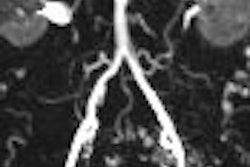As clinical applications have grown beyond "walkie talkie" ambulatory patients, MRI is used to not only image, but also to guide treatment therapies and invasive procedures. Over the past 20 years, the only elements that have changed more than the MRI equipment are the patients and the prescribed therapies they receive in the MRI suite.
Yes, orthopedic and neurological imaging are still bread-and-butter staples of most MRI practices, but emergent or sedation/anesthesia cases, MR-guided focused ultrasound, image-guided biopsy, and even intraoperative imaging are becoming increasingly common. These fundamental shifts in the way we use the modality warrant a review of operations and the physical facilities through which care is delivered.
A majority of MR facilities in use today were planned, designed, and built under the "strictly diagnostic" paradigm. Even many MRI suites within hospitals have more in common with outpatient clinics than with intensive in-patient services. How well do we address the issues of the patient on portable oxygen? What about the severely claustrophobic patient who requires general anesthesia to complete an exam? What are the specific provisions for infection control issues when MR suites evolve from diagnostic to interventional?
The current direction of clinical MR is clear. These new issues of increasing complexity in care will continue to grow and will overwhelm our current facilities and operations if we don't recognize the fundamental differences in the levels and plan our MR suites accordingly. To aid in the distinction of appropriate levels of care, we support the idea of level designations for MR facilities.
Using the same types of designations found in other clinical areas with levels of care, it makes sense to recognize at least three levels of MRI service that should be reviewed against fixed criteria. The following represents the basis of level designations that are currently under evaluation by different professional organizations.
Level I -- This would be the "strictly diagnostic" level of care. Interventional applications, anesthesia, and patients requiring specific clinical observation or care during the MR exam would be prohibited. Minimum facility requirements would be limited to the conventional American College of Radiology (ACR) four-zone safety and screening principle and the guidance provided in the ACR's "Guidance Document for MR Safe Practices: 2007."
Level II -- Level II could permit minimally invasive procedures, anesthesia, and examinations of patients that required clinical observation or care during the exam, such as emergent patients. Minimum facility requirements, above and beyond those of level I, would include medical gas services for all points of care for anesthesia patients (including induction and recovery areas), infection control appointments, and finishes relevant to the services provided.
Level III -- This level would permit major interventional or intraoperative procedures with MR guidance. This level would combine the minimum requirements of the proceeding two levels, plus all applicable requirements for operating rooms, and any equipment-related requirements.
Internal to our own consulting work, we have begun to use these designations to help define the appropriate levels of design to support clinical practice. Recommendations for some form of level designations of MRI facilities are currently under consideration by the ACR's MR Safety Committee and the American Society of Anesthesiologists (ASA), and will be introduced to the authoring committee of the American Institute of Architects' "Guidelines for Design and Construction of Health Care Facilities" (the model building code used by most states for healthcare facilities) for its consideration.
Regardless of the final form that MR facility level designations take, the fundamental shifts in clinical practice that spurred their development should motivate all MR providers to carefully evaluate the types of care they deliver and the specific operational and facility supports that should be in place to support that level of care.
For many MR facilities, this should raise a number of red flags. Are the medical gas work-arounds that are used safe or even legal? Are MR patients receiving sedation- or anesthesia-provided care in accordance with ASA standards? If your facility began performing image-guided procedures after having been built as a strictly diagnostic suite, what changes have you made in response to the infection control issues and unique MRI concerns? If you're providing ventilation or extensive physical monitoring of patients during MR exams, are you using equipment that is appropriately tested and rated for your MR equipment?
Start by identifying the maximum level of care you provide in your MR suite, then evaluate the operations and physical provisions you have in place. Facilities may decide that it is most prudent to temporarily suspend particular applications until deficiencies can be corrected. Others may prioritize the disparities between what the clinical practice suggests and what is currently in place, and phase in the improvements over a period of time.
Whatever your specific situation, rest assured that the months and years ahead will likely bring increasing levels of regulatory oversight to your MR facility. Proactively identifying ways to make your MRI suite scrutiny-proof will make you a star following your next facility survey!
By Tobias Gilk
AuntMinnie.com contributing writer
March 27, 2007
Reprinted from www.mri-planning.com by permission of the authors. If you would like more information on any aspect of MR facility design or safety, please contact Robert Junk or Tobias Gilk at MRI-Planning.com.
Related Reading
How to calculate your MRI suite safety score, February 8, 2007
MRI risk isn't standing still -- are you? January 29, 2007
It's 300 gauss: Do you know where your vent is? December 29, 2006
Medical gases in the MRI suite, December 14, 2006
Converting to new 'MR Safe' is hardly a fly-by-night effort, November 22, 2006
Copyright © 2007 MRI-Planning


.fFmgij6Hin.png?auto=compress%2Cformat&fit=crop&h=100&q=70&w=100)





.fFmgij6Hin.png?auto=compress%2Cformat&fit=crop&h=167&q=70&w=250)











